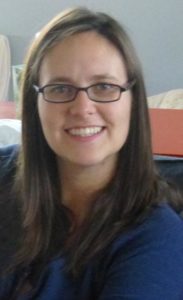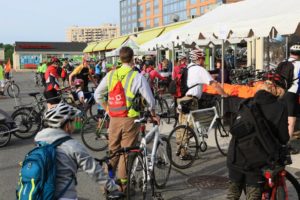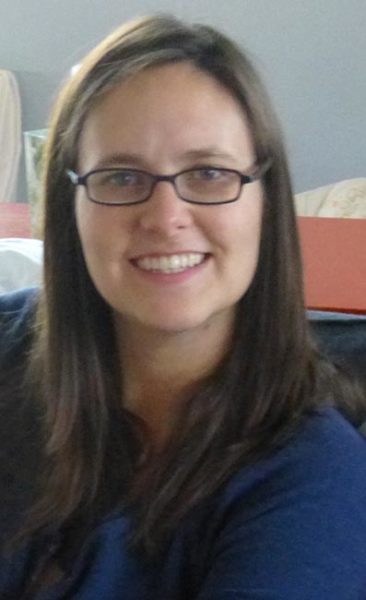 Progressive Voice is a weekly opinion column. The views and opinions expressed in the column are those of the individual authors and do not necessarily reflect the views of their organizations or ARLnow.com.
Progressive Voice is a weekly opinion column. The views and opinions expressed in the column are those of the individual authors and do not necessarily reflect the views of their organizations or ARLnow.com.
By Gillian Burgess
As Arlington grows, more people will travel around our County. Realistically, we don’t have space for more pavement, so we must find a way to allow more people to make more trips without clogging up our roads and parking lots.
Over the past few decades, Arlington County has steadily increased transportation choices, by making it safer and easier to walk, bike, and take transit to get around. Despite our growth, traffic congestion has stayed steady. This year, Arlington has the opportunity to make another such improvement on Washington Boulevard.
Arlington County is planning to expand the transportation network between East Falls Church and Westover by adding bike lanes on Washington Boulevard between North Sycamore Street and North McKinley Street. Best of all, the Virginia Department Of Transportation will contribute by painting the travel markings to incorporate bike lanes after the street is repaved later this year.
These lanes, which are called for in both the East Falls Church Area Plan and the Master Transportation Plan, will make biking west from the Metro and east to Westover (both of which will have Capital Bikeshare stations by the end of this year) much easier.
The route between the Metro and Westover shops via Washington Boulevard is shorter, flatter and easier to follow than via the trails. The lanes will connect to the current bike lanes on Washington Boulevard stretching east to George Mason Drive.
In order to fit in the bike lanes, VDOT will reallocate space that is currently used for parking cars in front of 21 houses, mostly on the south side of the road. This reallocation of space will allow for bike lanes in both directions.
The County has studied parking along Washington Boulevard and has observed parking patterns that support reallocating this space. People will generally have to go only one block farther away to find a free parking space and, in most places, people will only need to cross the street. Additionally, County staff believes that there will be significant available parking on side streets (which were not in the study, but should have been).
Bike lanes on Washington Boulevard will improve the transportation network for everyone in this area.
By allowing space on the road for people on bikes, people biking on Washington Boulevard will be safer, and cars won’t get stuck behind slower moving cyclists.
By making biking more comfortable, less hilly, and easier to follow, more people will choose to bike, improving traffic and parking availability. Moreover, by diverting some bike traffic off of the W&OD and Custis Trails, these bikes lanes will improve the experience for people on our trails.
Putting in bike lanes now is also fiscally responsible. Because the lanes are being installed with repaving, the costs above what would already be spent for repaving are negligible.
By building out a transportation network that gives people options beyond the car, the County stands to save significant money in the future.
Arlington is building more schools, parks, and community centers, and car parking is a significant cost to these projects. By making it easy and attractive to get to County locations by foot, by bike and via transit, we can reduce the amount of parking needed — with significant savings to the County.
Reallocating this space from parking to bike lanes is a good deal for the County and for the neighborhood. Change, of course, is difficult, especially for those immediately impacted. The County should look for creative solutions to ease the transition.
For example, Arlington could look at options for allowing Sunday-only parking on some of the neighborhood streets around Resurrection Lutheran Church. Arlington should also work with the schools and preschools in the area to ensure there are safe places for children to be dropped off and picked up by car or bike or on foot.
Westover and East Falls Church are becoming interesting, dynamic activities centers. With the opportunity to add an elementary school at the Reed School beside the Westover Library, delicious restaurants at the Westover shops, and expected development near the East Falls Church Metro stop, we can expect activity — and travel — through this area to increase.
Adding bike lanes on Washington Boulevard is an important step in improving our transportation network to address the increased needs in this area.
More information about this project can be found on the County’s project site. The County is accepting public comment on the project until Friday, March 17.
Gillian Burgess is the current chair of Arlington County’s Bicycle Advisory Committee, the founder of Kidical Mass Arlington, and a member of the County’s Fiscal Affairs Advisory Commission and APS’s Advisory Committee on Transportation Choices. She lives in Cherrydale with her husband and three children.



